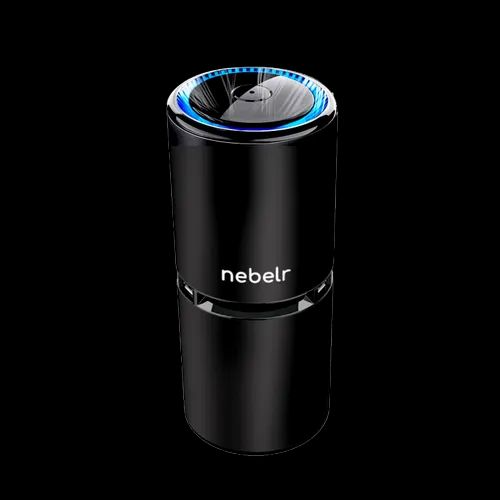
An air ionizer is an electronic device that cleans the air by releasing negative ions into the environment.
ionizers are devices that use electricity to get rid of harmful particles in the air. They work by attacking the molecules of these particles and neutralizing them.
What does an air ionizer do?
Understanding what air ionizers do helps to know what air ions are.
Air ions are molecules that have an electrical charge. They are invisible and float around in the atmosphere. Negative ions are molecules that have gained an electron; positive ions are those that have lost an electron.
An air ionizer is a device that puts negative ions in the air. These negative ions attach to tiny particles, like those in tobacco smoke. This makes the tiny particles clump together and they then land on surfaces.
- walls
- ceilings
- floors
- tabletops
- curtains
- carpets and rugs
- metal collector plates in the device
There are two scientific reviews that found that negative ions and ozone can stop the growth of viruses. Negative ions stop viruses’ growth, while ozone inactivates viruses by hurting their genetic material and membranes.
The pandemic that has caused chaos around the world is now being addressed with an innovative solution – ionizers. These devices are installed in offices and restaurants as ways to improve air quality and reduce SARS-CoV2 levels among employees who may have become infected by this virus causing the COVID-19 disaster.
Ionizers produce ozone which has been found to be highly effective against other SARS viruses. It’s unclear how well ionizer-made Ozone works specifically for the destruction of CoV2, but more studies are needed before we can make any assumptions about its ability or lack thereof against this particular type/version of the virus.
How Do Air Ionizers Work?
One of the most popular home remedies for bad breath is to use an ionizer. An Ionizer uses electrostatic charging plates that produce negatively charged ions, which attach themselves as they move through the air with other tiny airborne particulates like cigarette smoke and toxins in only 10 minutes or so!
Types of air ionizers?
Bipolar ionization
Bipolar ionization is a technology that creates positive and negative air ions. This technology is often used with other devices, like HVAC systems. However, bipolar ionization is fairly new so the research on its effectiveness is limited.
Ionizer on fans
A fan helps increase ventilation in a room. Some fans also have a setting that releases negative ions. Negative ions help circulate the air and improve airflow.
Some fans have rotating blades to circulate air. This is useful for improving ventilation in a space. Some fans also contain an ionizing setting that releases negative ions. This helps to circulate air and promote airflow.
Electrostatic Precipitator Ionizer
The first electrostatic air ionizers were marketed for home use in 1954. They work by attracting particles to a positive-charge plate. The plate needs to be cleaned frequently, but you don’t have to vacuum up the particles. These ionizers use a lot of energy.
Air purifier with ionizer
An air purifier is a device used to clean the air by removing harmful particles.
- room air cleaner
- portable air cleaner
- air sanitizer
Air purifiers work by using a filter and fan to clean the air. Unlike an ionizer, they are effective at removing dust or pollen which can make you sick with asthma/allergies if it is not properly regulated; but some models also include technology like negative ions so that your room will feel better too!
What Are the Benefits of an Air Ionizer?
While there are many different types of air ionizers on the market, it’s important to consider their pros and cons before making your final decision.
Advantages of air ionizers
- This air purifier is effective in getting rid of tiny particles, like smoke, soot, and other pollutants.
- This device is fanless and quiet to run
- This typically means that it can be easily transported.
- This product is both economical and easy to maintain.
How can Air Ionizer help?
Air purifiers can help improve indoor air quality by removing airborne particles and pollutants. They work by drawing in air from the surrounding environment, filtering it through a series of filters, and then releasing clean air back into the room.
Some of the common airborne particles and pollutants that air purifiers can help remove include:
- Dust and pet dander: These are common allergens that can cause respiratory problems.
- Pollen: Pollen can trigger allergies and asthma in some people.
- Mold and mildew: These can cause respiratory problems and other health issues.
- Smoke and odors: Air purifiers can help remove smoke and odors from the air, which can be especially helpful for people who live in areas with high levels of air pollution.
- Bacteria and viruses: Some air purifiers have HEPA filters that can capture bacteria and viruses, which can be especially helpful during flu season or in areas with high levels of pollution.
How Much Do Air Ionizers Cost?
There are many different types of home air ionizers. They can cost between $40-$200. The more features the ionizer has, the more it will cost.
Before you buy an air ionizer, it is important to follow the guidelines set by the Association of Home Appliance Manufacturers. AHAM has a certification program that lists all certified cleaners and their CADR (clean air delivery rate) values on its website.
If you buy an air ionizer, make sure it is the right size for the room. And, of course, follow the manufacturer’s instructions.